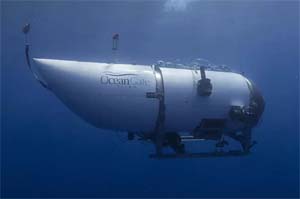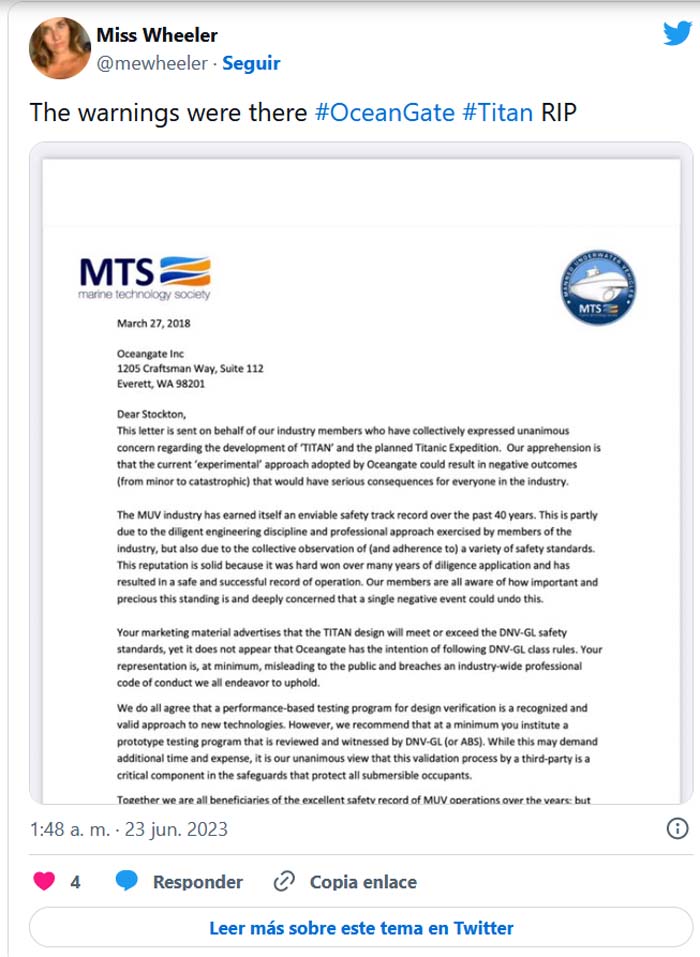World Desk : dhakamirror.com
Details of how the tragedy unfolded will emerge once the tragedy of the Titan submarine, which imploded at the bottom of the Atlantic Ocean and resulted in the deaths of its five crew members, including Stockton Rush, owner of OceanGate Expeditions, is confirmed happened. Now we get all the details about why it happened.
In fact, it has been revealed that, just like the Titanic before her tragic voyage in 1912, the Titan team ignored a series of warnings about the vulnerability of the submarine, which was about to dive to a depth of 3,800 meters and was crushed by the pressure at the bottom of the sea.
The Titan was named by OceanGate Expeditions as a reference to its objective as a submersible navigation instrument: to visit the legendary Titanic, the ship that boasted of being unsinkable.
Stockton Rush fell into the same error as the owners of the Titanic and precisely announced his submarine as “the world’s only manned submersible that can take five people to depths of up to 4,000 meters below the ocean surface.” And just like the owners of the ship, he died at the bottom of the ocean about 700 kilometers off the coast of Canada.
What is even sadder is that Rush ignored several leaders in the submersible industry and oceanographers who expressed their concern about what they referred to as an “Titanic experiment” by OceanGate.
In fact, in 2018, more than thirty of these experts sent a letter to OceanGate warning them of the possibility of facing a series of “catastrophic” problems related to the performance of the vessel and its vulnerability in deep waters, as it prevented the sending of signals and withstanding the high pressure, as it ended up happening.
This letter was obtained and shared by The New York Times, confirming that the tragedy could have been prevented.
In an interview with CBS News in 2022, Rush, who piloted the submarine, stated that it was safe on its journey, although he acknowledged that it was not without risks. “What concerns me the most are things that prevent me from reaching the surface: protrusions, fishing nets, entanglement hazards,” he said, but warned that “a good pilot can avoid those dangers.”
The failed design of the Titan submarine
The vehicle was made of carbon fiber and titanium, two lightweight but strong materials. It measured 6.5 meters in length (side to side) and had a capacity for five people, who had to travel seated at the base with their legs folded and without shoes.
The trip was scheduled to descend for two hours to where the Titanic is located, observe it for several hours, and then spend two more hours returning to the surface. The interior only had a porthole at the bow for observation, a button, and a screen on the wall. The rest of the operations were carried out using a video game controller.
There were no provisions on board, and water consumption was rationed since the trip was planned for a few hours with weight restrictions.
The only ‘luxury’ of the vehicle was a small bathroom at the rear of the submarine. Before erasing the information about the trip, OceanGate mentioned that when someone uses the bathroom, a privacy curtain is installed “and the music is turned up loud.” Hence, one of the recommendations to the crew was to restrict their food consumption “to reduce the likelihood of needing to use this bathroom.”
– Input from marca.com was used in this article.




















